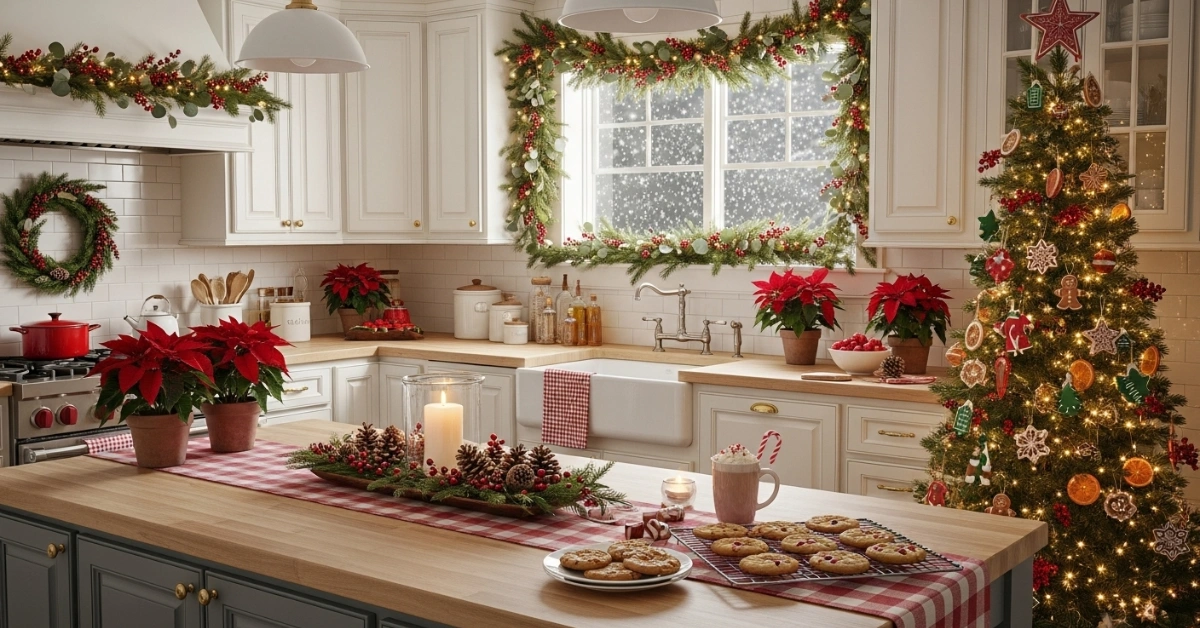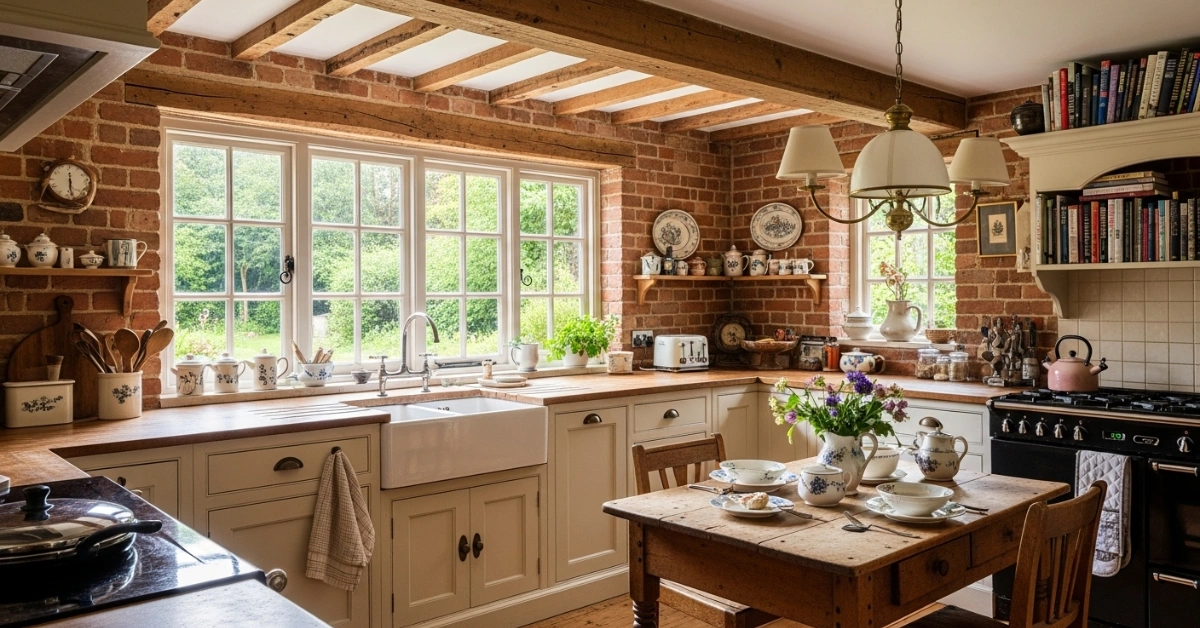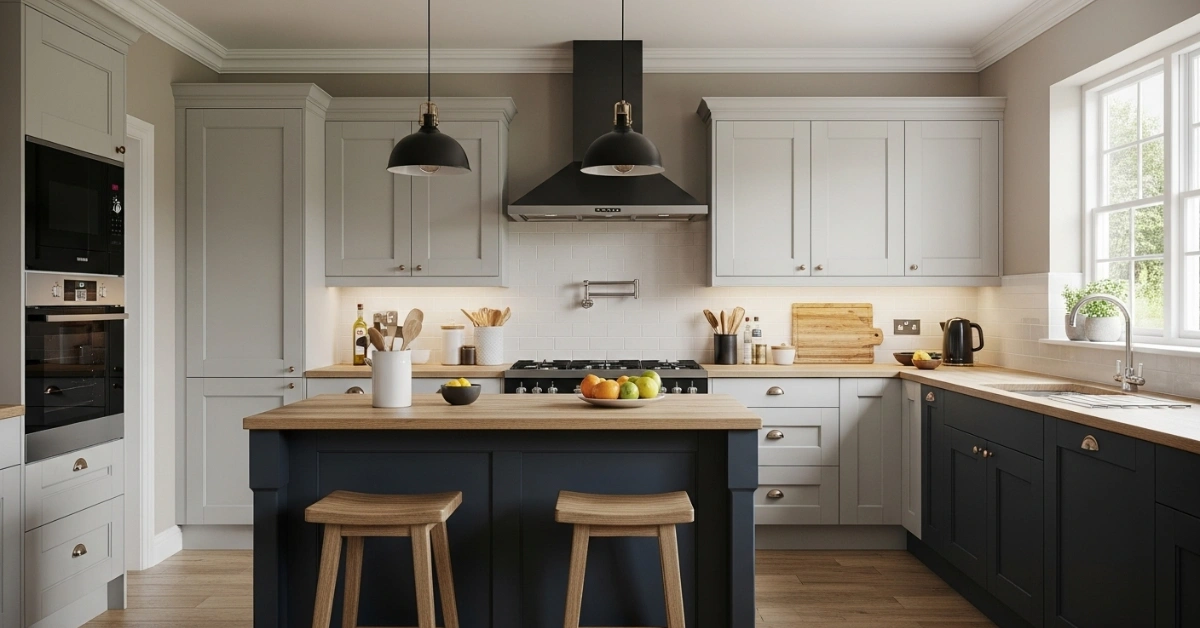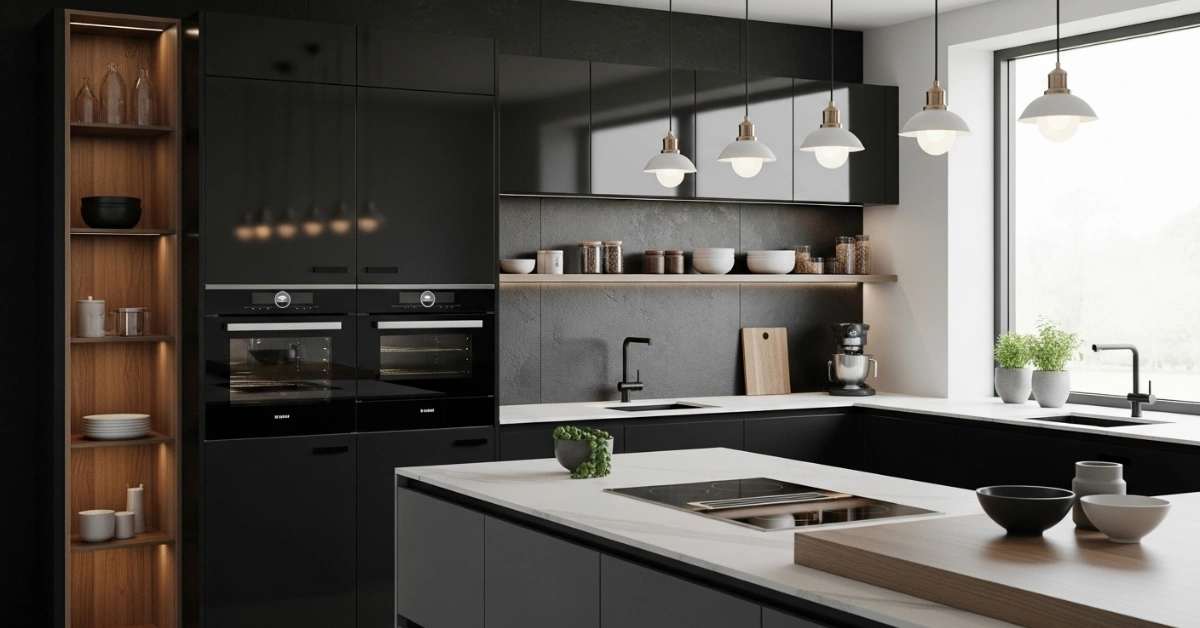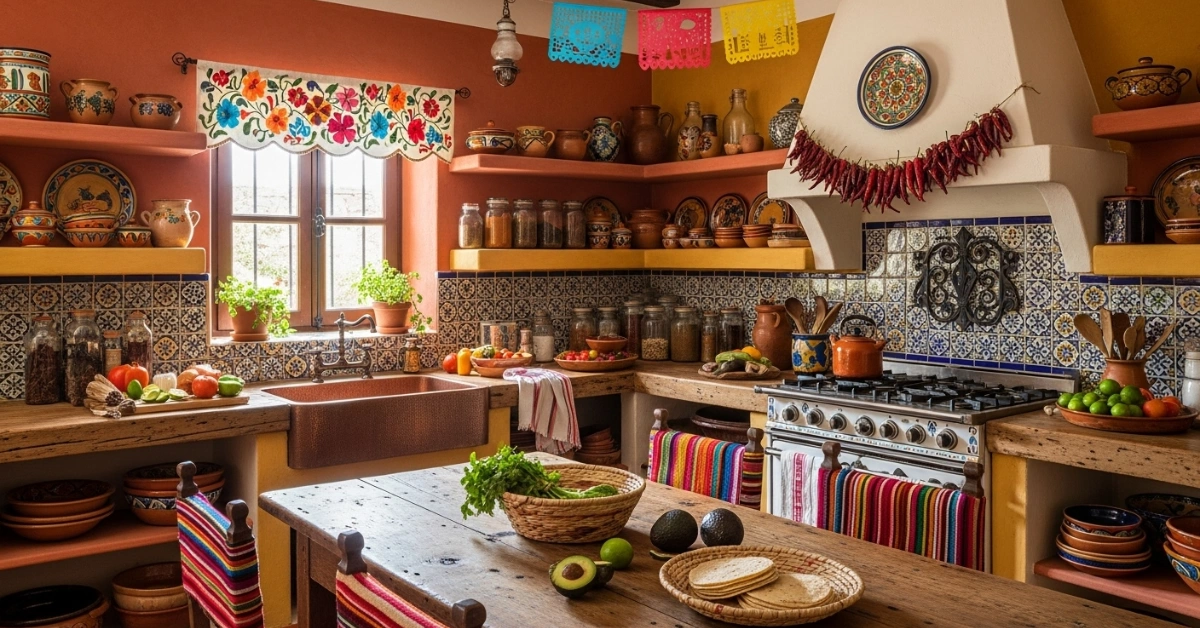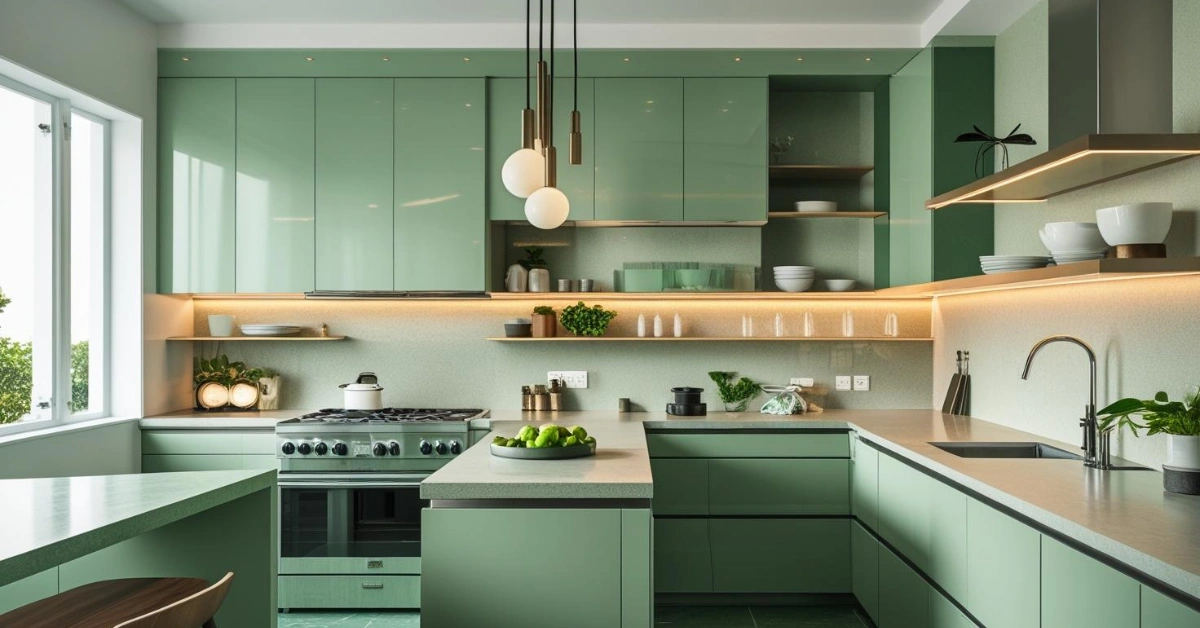Create Organic Kitchen Design: 25 Ideas for a Natural Look
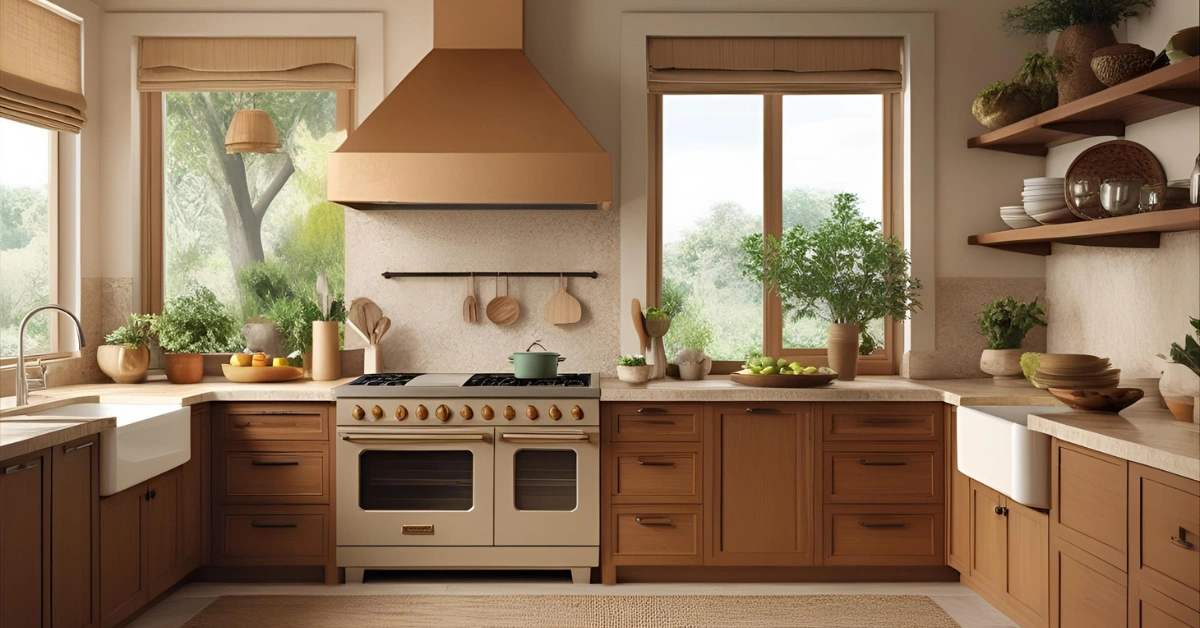
Kitchens are the heart of the home, but many feel cold and disconnected from nature. Harsh lighting, synthetic materials, and cluttered layouts can make cooking feel like a chore instead of a joy. If you’re craving a space that feels warm, inviting, and grounded, organic kitchen design could be the answer.
This approach blends natural elements, eco-friendly choices, and thoughtful layouts to create a kitchen that’s both functional and soul-soothing. In this guide, we’ll explore what organic kitchen design means, why it’s gaining popularity, and how you can bring this timeless style into your home with practical tips and inspiring ideas.
What Is Organic Kitchen Design?
Organic kitchen design focuses on creating a space that feels natural, sustainable, and harmonious. It draws inspiration from the environment, using earthy materials, soft colors, and open layouts to foster a sense of calm. According to a 2023 survey by the National Kitchen & Bath Association, 68% of homeowners prioritize eco-friendly materials in kitchen renovations, highlighting the growing demand for this style.
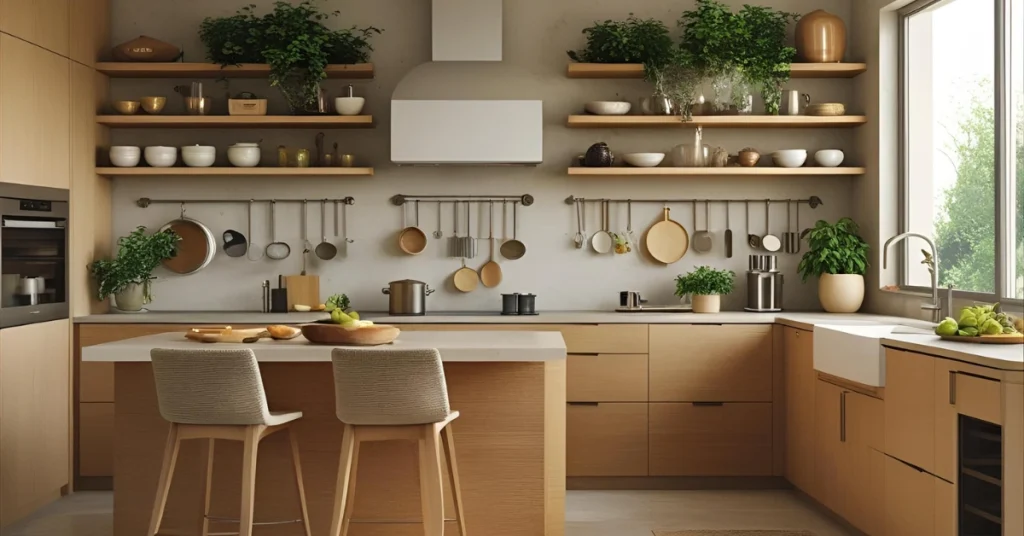
Key Principles of Organic Kitchen Design
- Natural Materials: Wood, stone, bamboo, and clay dominate the aesthetic.
- Neutral Color Palettes: Earthy tones like beige, sage, and terracotta create warmth.
- Sustainability: Eco-conscious choices reduce environmental impact.
- Biophilic Elements: Plants and natural light connect the space to the outdoors.
- Minimalism: Clean lines and uncluttered surfaces promote tranquility.
As interior designer Sarah Thompson notes, “Organic kitchens aren’t just about aesthetics they’re about creating a space that nurtures both people and the planet.”
Benefits of an Organic Kitchen Design
Why choose organic kitchen design over other styles? Here are some compelling reasons:
- Healthier Living: Natural materials like wood and stone are free from harmful chemicals found in synthetic alternatives.
- Timeless Appeal: Earthy tones and textures never go out of style, ensuring your kitchen stays relevant for years.
- Eco-Friendly: Sustainable materials and energy-efficient appliances reduce your carbon footprint.
- Calming Atmosphere: Biophilic elements like plants and sunlight boost mood and reduce stress, as supported by a 2022 study in Journal of Environmental Psychology.
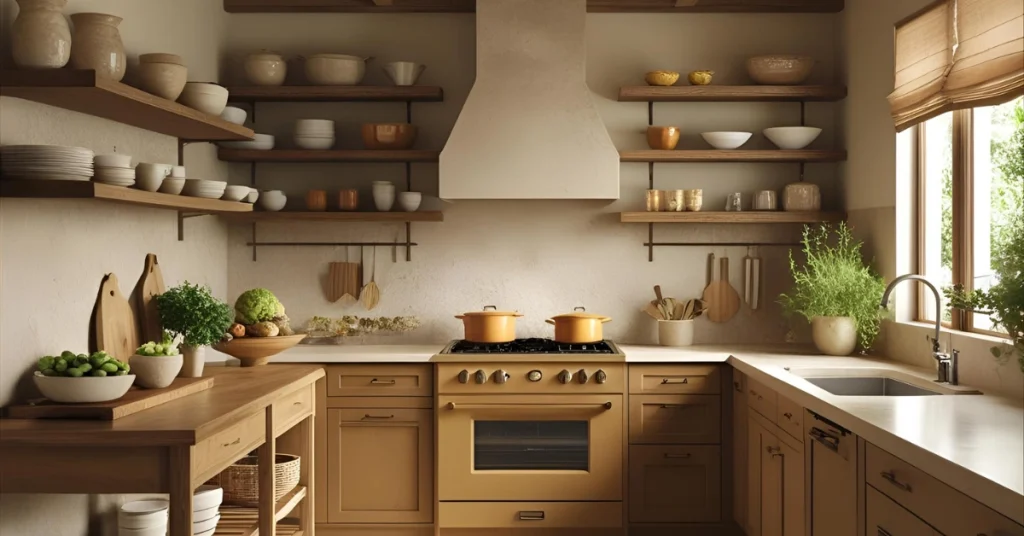
In my own home, switching to an organic kitchen layout with reclaimed wood cabinets and a herb garden on the windowsill transformed the space into a sanctuary. Cooking now feels like a creative, grounding ritual.
Choosing Materials for Organic Kitchen Design
The foundation of organic kitchen design lies in its materials. Here’s a breakdown of the best options and how to use them effectively.
1. Wood
Wood brings warmth and texture to any kitchen. Opt for reclaimed or FSC-certified wood to ensure sustainability.
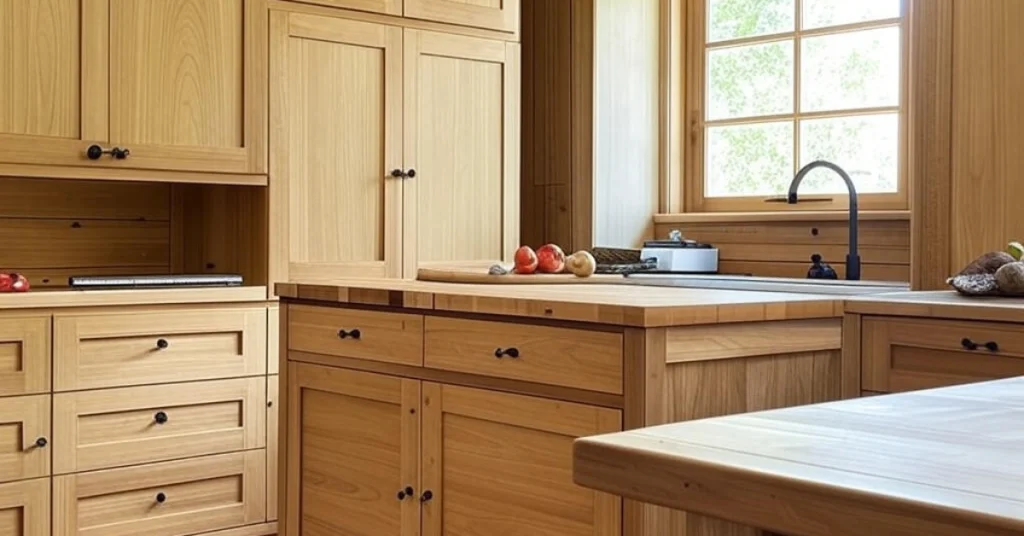
- Cabinets: Unfinished or lightly stained oak or walnut cabinets add rustic charm.
- Countertops: Butcher block countertops are durable and eco-friendly.
- Shelving: Open wooden shelves display ceramics or glassware beautifully.
2. Stone
Natural stone like granite, marble, or soapstone adds elegance and durability.
- Countertops: Soapstone’s soft, matte finish complements organic aesthetics.
- Backsplashes: Irregular stone tiles create a textured, earthy look.
- Tip: Seal stone surfaces regularly to prevent stains.
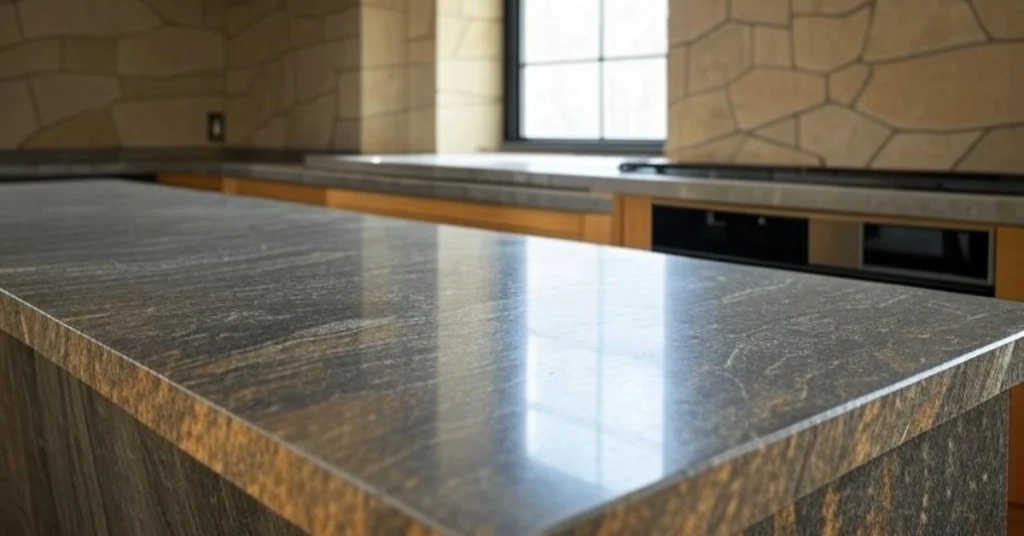
3. Bamboo
Bamboo is a renewable resource that’s both strong and stylish.
- Flooring: Bamboo planks offer a sleek, modern alternative to hardwood.
- Utensils: Bamboo cutting boards and utensils add subtle detail.
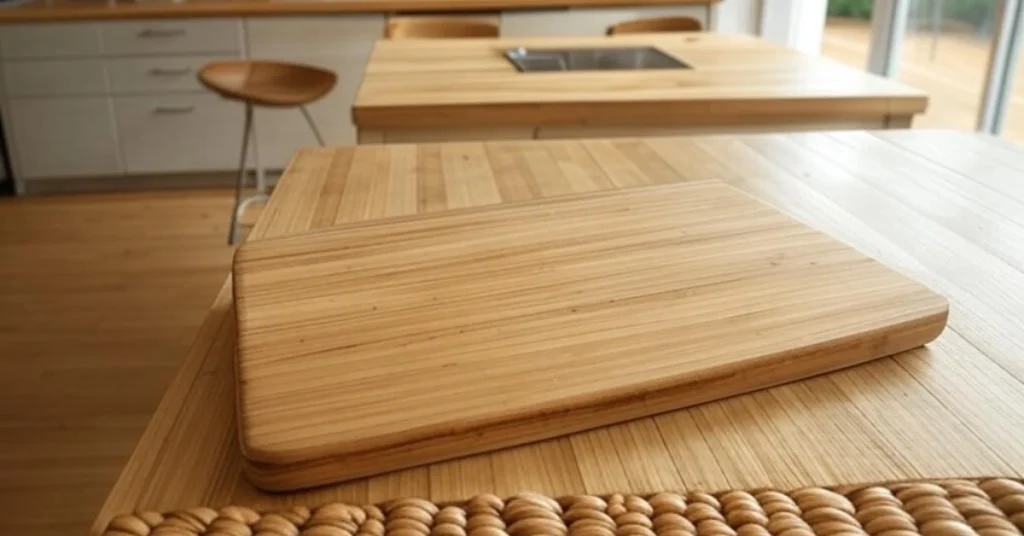
4. Clay and Ceramics
Handcrafted clay tiles or ceramic dishware bring artisanal charm.
- Backsplashes: Terracotta tiles evoke Mediterranean vibes.
- Accents: Ceramic vases or bowls double as decor and storage.
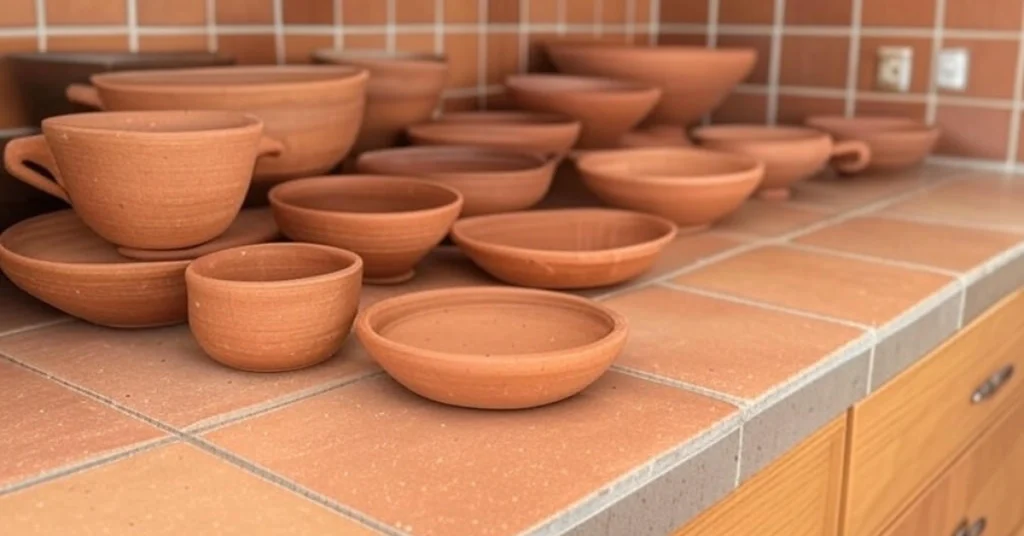
Material Comparison Table
| Material | Pros | Cons | Best Use |
|---|---|---|---|
| Wood | Warm, versatile, sustainable | Requires maintenance | Cabinets, countertops |
| Stone | Durable, elegant | Expensive, needs sealing | Countertops, backsplashes |
| Bamboo | Eco-friendly, affordable | Less durable than wood | Flooring, utensils |
| Clay | Artisanal, unique | Fragile, limited applications | Tiles, decor |
Color Palettes for Organic Kitchen Design
Colors play a crucial role in setting the mood. Organic kitchen design leans on earthy, muted tones that evoke nature.
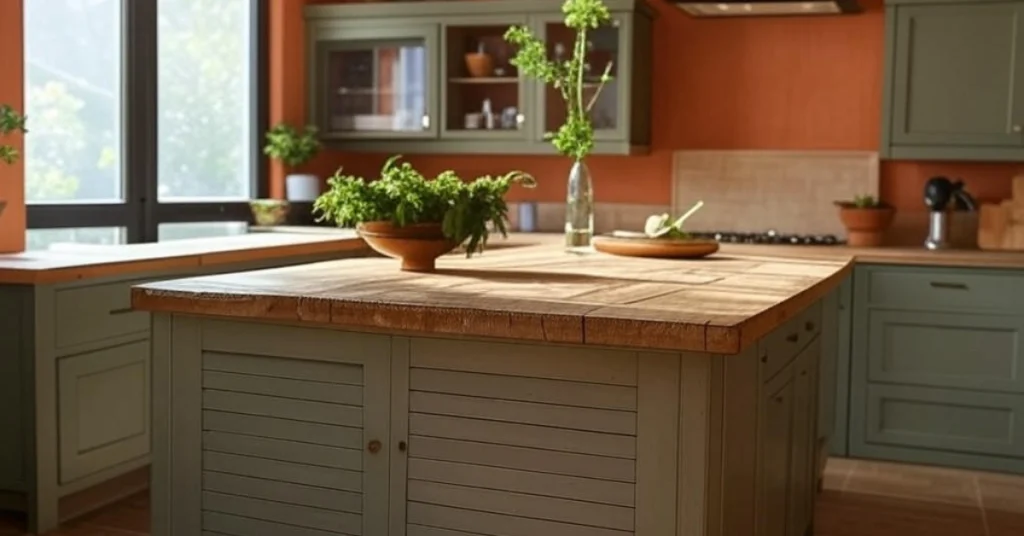
Popular Color Choices
- Neutrals: Beige, ivory, and taupe create a soft backdrop.
- Greens: Sage or olive green cabinets add a fresh, forest-like feel.
- Browns: Terracotta or chestnut tones ground the space.
- Blues: Soft, muted blues mimic the sky or sea.
Tips for Using Color
- Balance Tones: Pair warm (e.g., terracotta) and cool (e.g., sage) hues for depth.
- Accent with Metallics: Brass or copper fixtures add subtle shine without overpowering the natural vibe.
- Test Samples: Always test paint or stain samples under your kitchen’s lighting, as natural light can alter hues.
Designer Emily Harper advises, “Stick to a palette of three colors max. Let textures and materials do the talking.”
Layout Ideas for Organic Kitchen Design
A well-planned layout enhances functionality and flow. Here are three popular layouts for organic kitchens:
1. Open-Plan Kitchen
- Why It Works: Open layouts maximize natural light and create a social hub.
- Features: Large windows, an island with seating, and minimal walls.
- Example: A friend’s open-plan kitchen with a reclaimed wood island became the go-to spot for family gatherings.
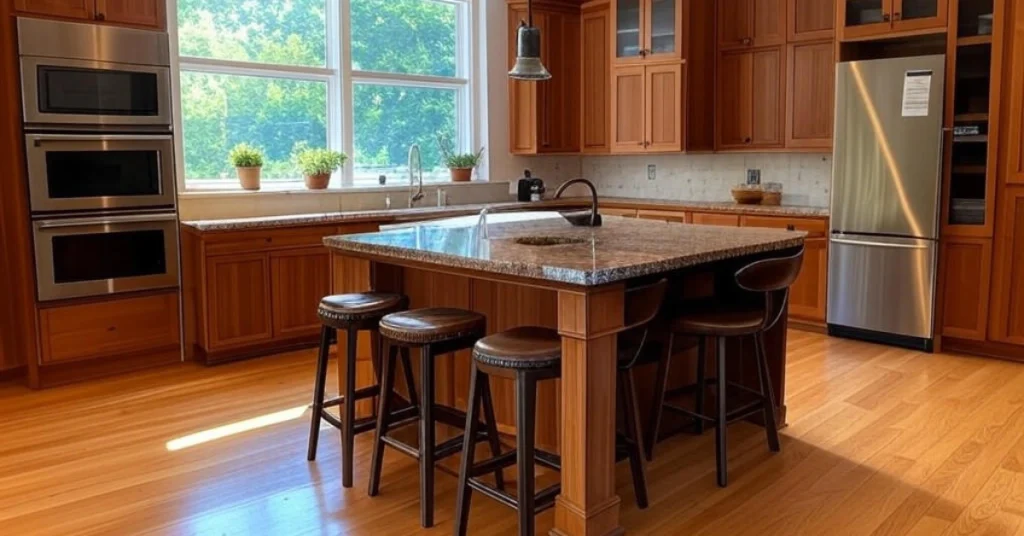
2. U-Shaped Kitchen
- Why It Works: Offers ample counter space and storage for busy cooks.
- Features: Stone countertops, wooden cabinets, and a small herb garden by the sink.
- Tip: Add pendant lights made of rattan or woven materials for warmth.
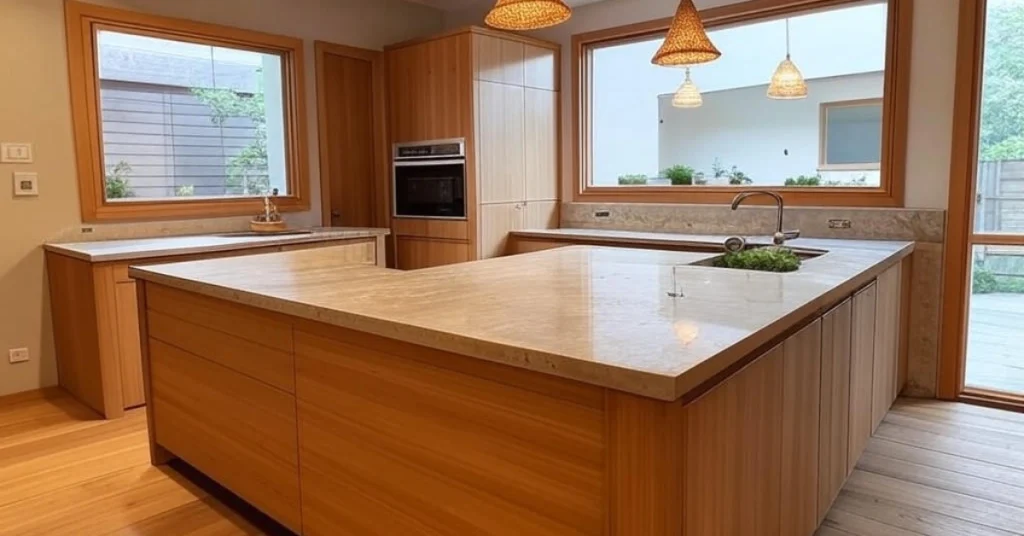
3. Galley Kitchen
- Why It Works: Efficient for small spaces while still feeling airy.
- Features: Bamboo flooring, open shelving, and a neutral backsplash.
- Tip: Use mirrors or glass cabinet doors to reflect light and make the space feel larger.
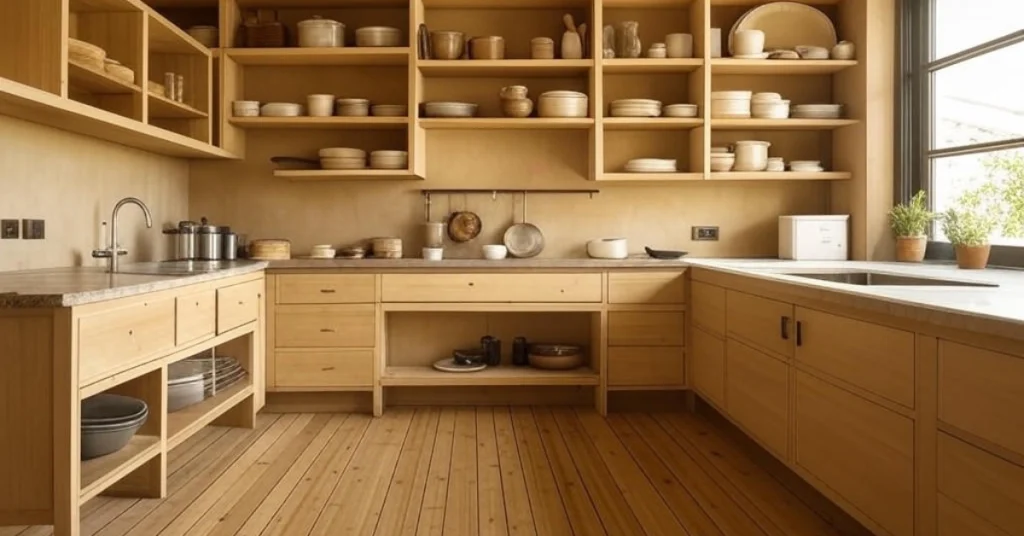
Incorporating Biophilic Elements
Biophilic design connects indoor spaces to nature, and it’s a cornerstone of organic kitchen design. Here’s how to bring the outdoors in:
1. Plants
- Herb Gardens: Grow basil, thyme, or rosemary on a windowsill.
- Potted Plants: Ferns or pothos add greenery without taking up counter space.
- Vertical Gardens: Install a wall-mounted planter for small kitchens.
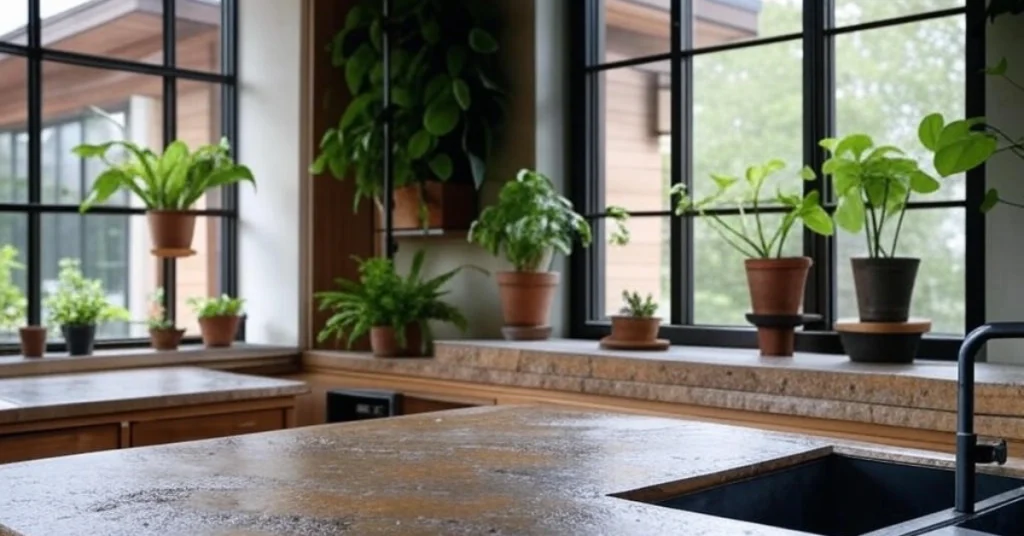
2. Natural Light
- Windows: Large, untreated windows let sunlight flood the space.
- Skylights: Ideal for kitchens with limited wall space.
- Tip: Use sheer curtains to soften light without blocking it.
3. Water Features
- Small Fountains: A tabletop fountain adds a soothing sound.
- Sink Design: Choose a deep, farmhouse-style sink in ceramic or stone.
A 2021 study in Frontiers in Psychology found that biophilic elements in homes reduce stress by 15%. Adding a few plants to my kitchen not only improved the aesthetic but also made it feel more peaceful.
Sustainable Practices in Organic Kitchen Design
Sustainability is at the heart of organic kitchen design. Here are practical ways to make your kitchen eco-friendly:
1. Energy-Efficient Appliances
- Choose ENERGY STAR-certified refrigerators, dishwashers, and ovens.
- Look for induction cooktops, which use less energy than gas or electric.
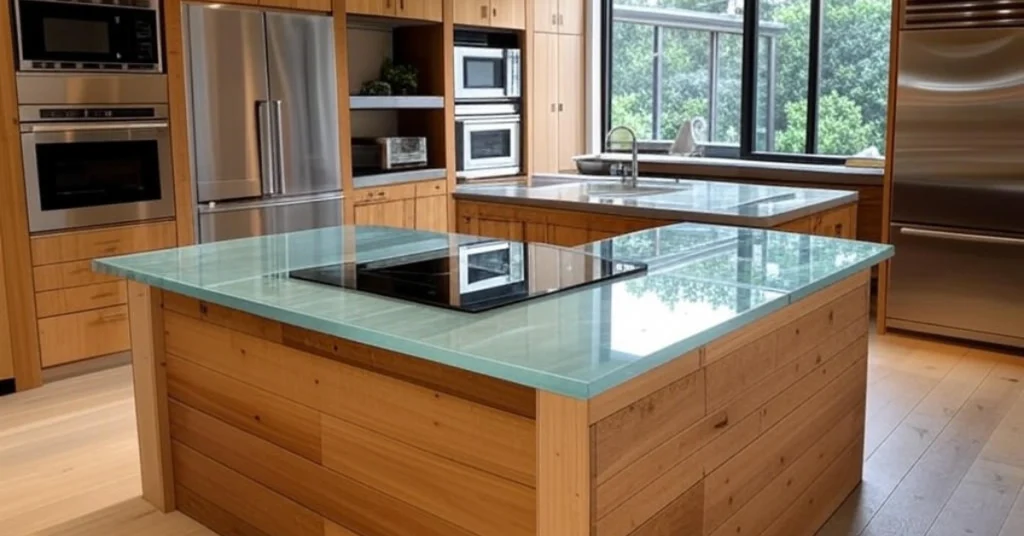
2. Water Conservation
- Install low-flow faucets and aerators to reduce water waste.
- Use a dishwasher instead of hand-washing, as modern models use less water.
3. Waste Reduction
- Set up a composting station for food scraps.
- Use reusable cloth napkins and beeswax wraps instead of disposables.
4. Recycled Materials
- Opt for countertops made from recycled glass or composite materials.
- Choose cabinetry crafted from reclaimed wood.
“Sustainability isn’t a trend it’s a responsibility,” says eco-designer Mark Rivera. “Small choices in your kitchen can have a big impact.”
Decor and Accessories for Organic Kitchen Design
The right decor ties the space together. Here are ideas to enhance your organic kitchen:
1. Textiles
- Rugs: Jute or cotton rugs add texture underfoot.
- Curtains: Linen or hemp curtains soften windows.
- Towels: Handwoven dish towels in earthy tones double as decor.
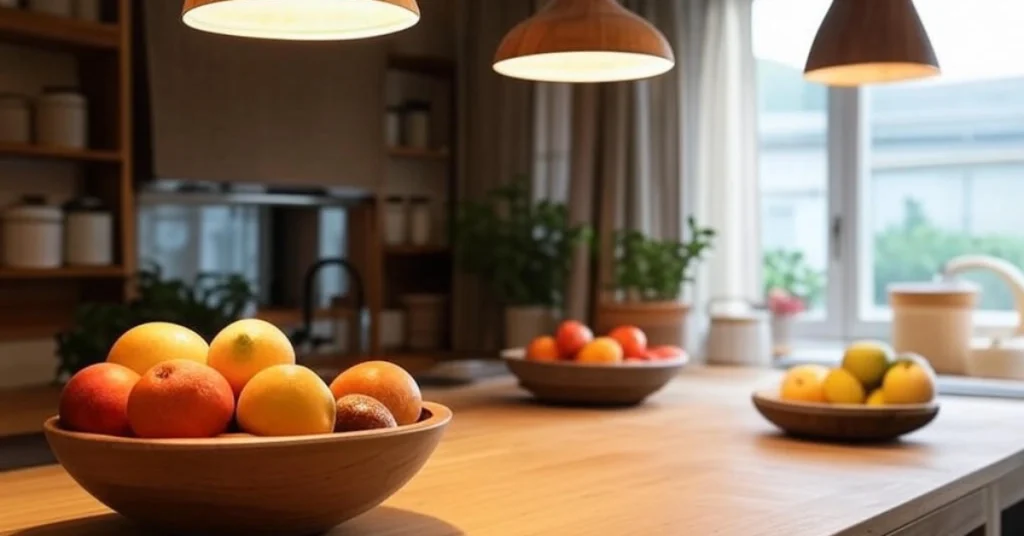
2. Lighting
- Pendant Lights: Woven or wooden fixtures create a cozy glow.
- Under-Cabinet Lighting: LED strips highlight countertops without wasting energy.
- Tip: Use warm-toned bulbs (2700K–3000K) for a natural feel.
3. Functional Decor
- Ceramic Canisters: Store grains or spices in handmade jars.
- Wooden Bowls: Display fruit or use as serving pieces.
- Artwork: Hang botanical prints or landscapes for a nature-inspired touch.
Common Mistakes to Avoid in Organic Kitchen Design
Even with the best intentions, mistakes can derail your vision. Here’s what to watch out for:
- Overloading with Trends: Avoid trendy items that clash with the timeless organic aesthetic.
- Ignoring Lighting: Poor lighting can make natural materials look dull.
- Skipping Maintenance: Natural materials like wood and stone require regular care.
- Cluttering Surfaces: Too many accessories disrupt the minimalist vibe.
In a recent project, a client insisted on glossy white cabinets in an organic kitchen. The result felt sterile until we swapped them for matte walnut, which restored the warmth.
Inspiration: Real-Life Organic Kitchen Design Examples
Need a spark of creativity? Here are three real-world examples:
1. Coastal Organic Kitchen
- Location: Santa Barbara, CA
- Features: Driftwood cabinets, sea-green tiles, and a skylight.
- Why It Works: The palette and materials echo the nearby ocean.
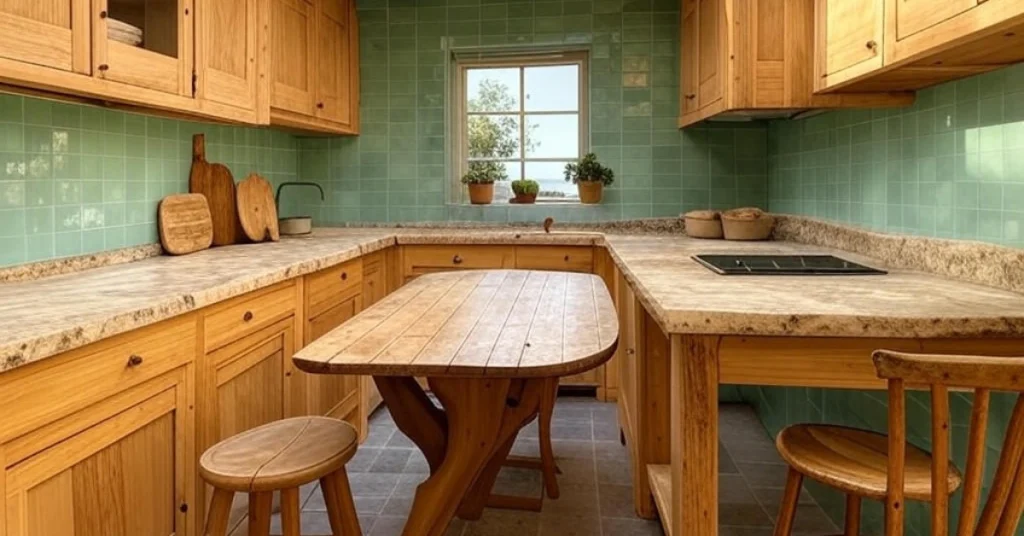
2. Rustic Farmhouse Kitchen
- Location: Vermont
- Features: Reclaimed barnwood island, soapstone counters, and a herb garden.
- Why It Works: The rugged textures feel authentic and lived-in.
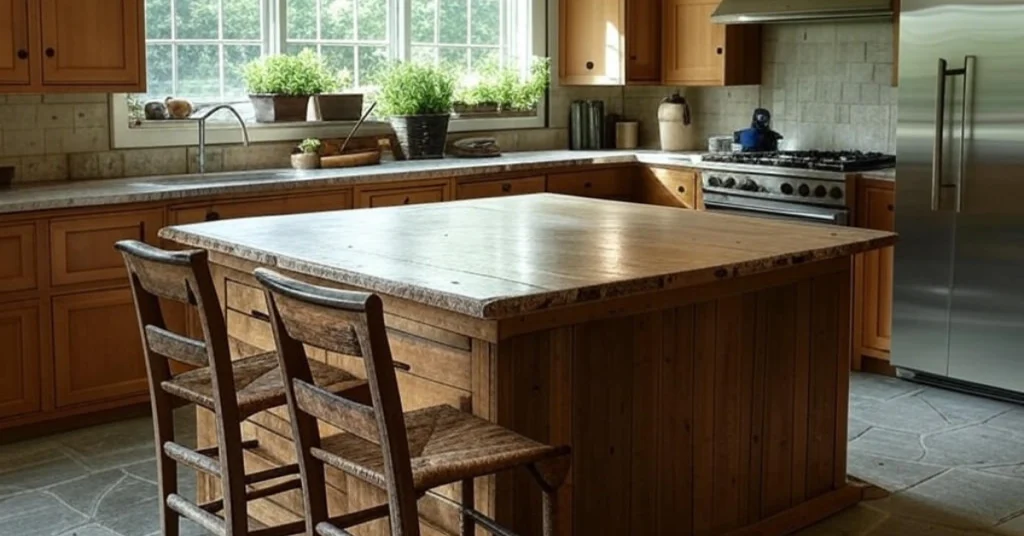
3. Modern Organic Kitchen
- Location: Seattle, WA
- Features: Bamboo flooring, matte black fixtures, and vertical planters.
- Why It Works: Clean lines meet natural elements for a contemporary twist.
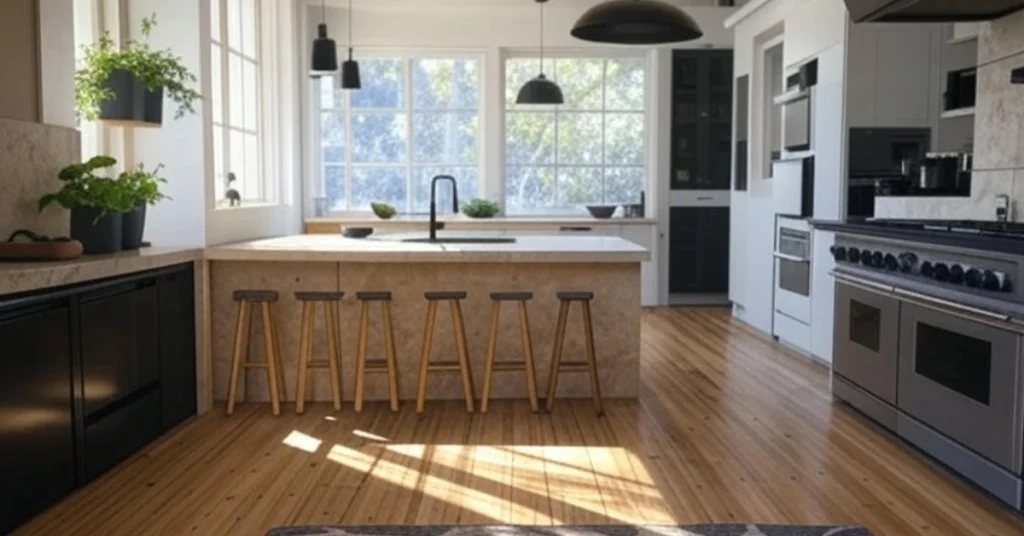
How to Start Your Organic Kitchen Design Journey
Ready to transform your kitchen? Follow these steps:
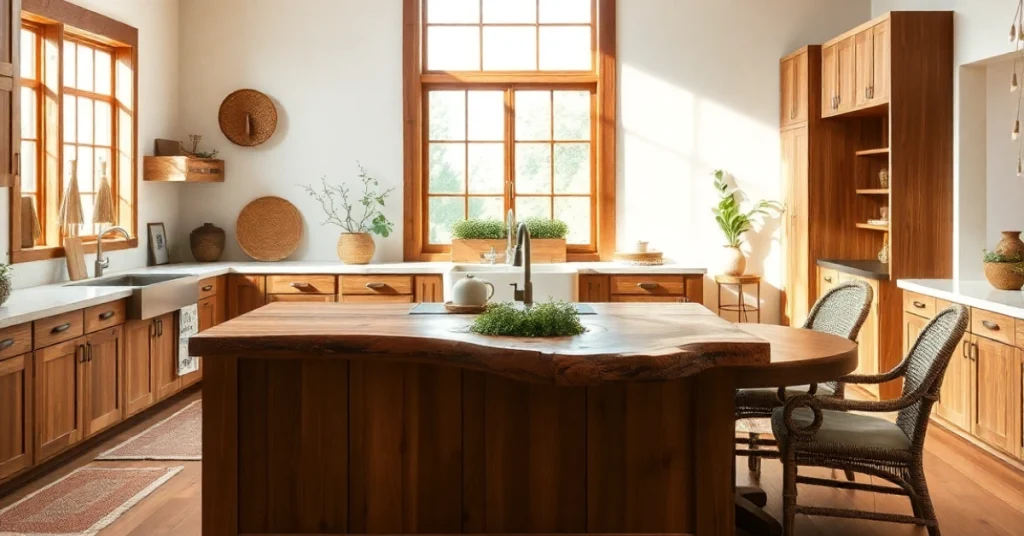
- Assess Your Space: Measure your kitchen and note existing features like windows or lighting.
- Set a Budget: Organic materials can be pricey, so prioritize key elements like countertops or cabinets.
- Gather Inspiration: Create a mood board with colors, textures, and layouts you love.
- Consult a Designer: A professional can help balance aesthetics and functionality.
- Start Small: If a full renovation isn’t possible, swap out fixtures or add plants for an organic touch.
Conclusion: Bring Organic Kitchen Design to Life
Organic kitchen design is more than a trend it’s a lifestyle choice that celebrates nature, sustainability, and simplicity. By blending natural materials, earthy colors, and biophilic elements, you can create a kitchen that’s both beautiful and functional. Whether you’re planning a full renovation or a few small updates, the ideas in this guide will help you craft a space that feels like home.
Ready to get started? Explore sustainable materials, experiment with plants, and let your kitchen reflect your love for the natural world. Your dream organic kitchen is just a few steps away.

